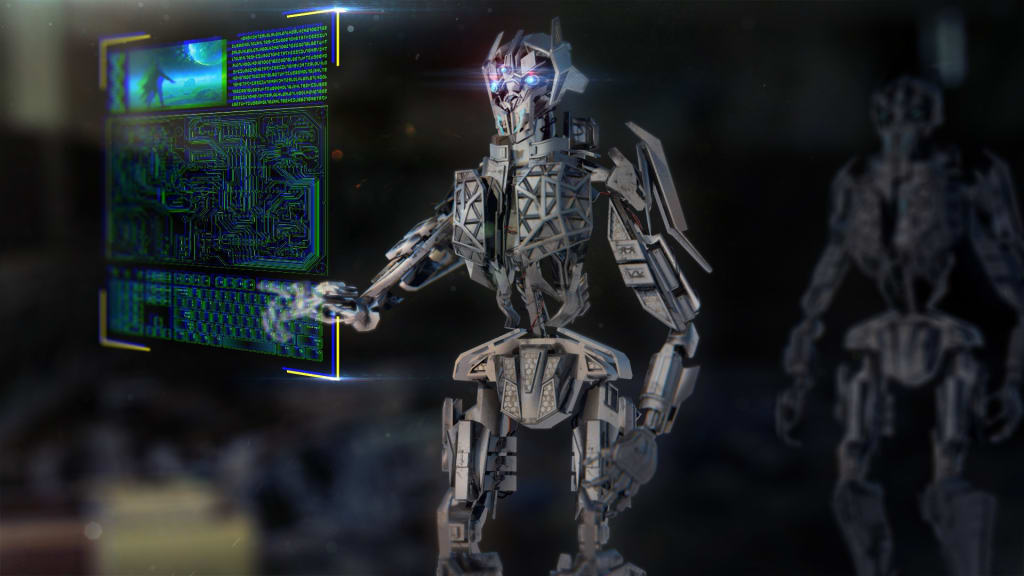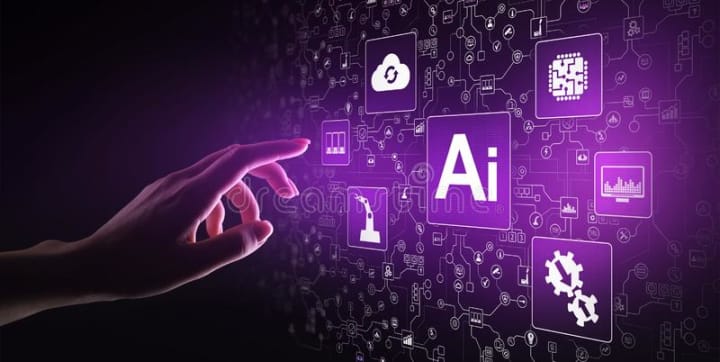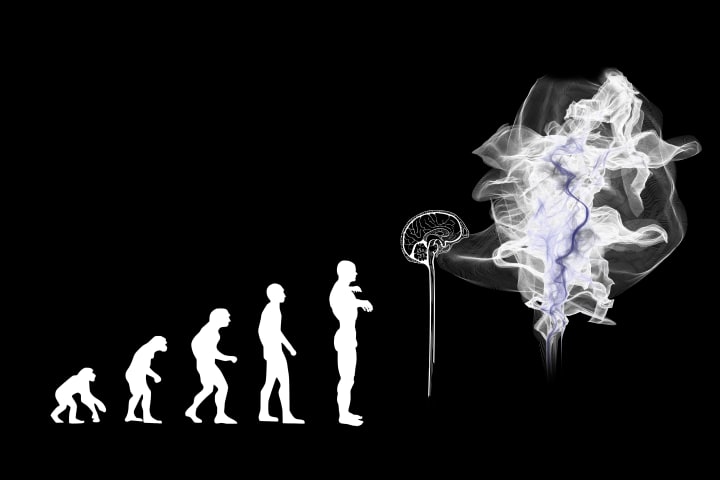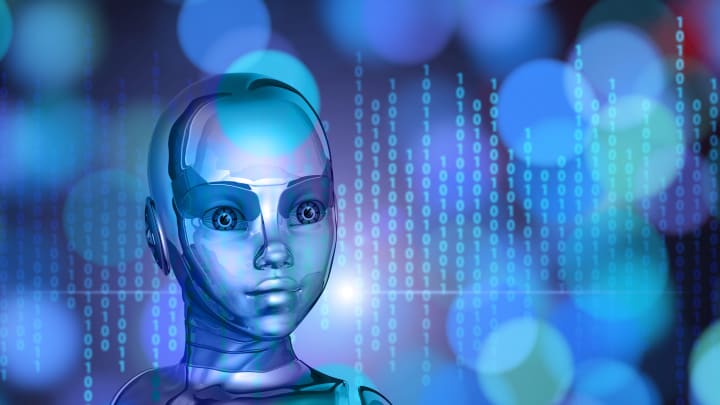Artificial Intelligence
How does work AI?

Introduction:
Artificial intelligence (AI) refers to the simulation of human intelligence in machines that are programmed to think and learn like humans. AI is composed of various techniques and technologies, including machine learning, natural language processing, and robotics, that enable machines to perform tasks that would typically require human intelligence, such as recognizing speech, making decisions, and playing games. AI is being used in a wide range of applications, including self-driving cars, virtual assistants, and medical diagnosis.
Artificial intelligence would be the ultimate version of Google. The ultimate search engine that would understand everything on the web. It would understand exactly what you wanted, and it would give you the right thing. We're nowhere near doing that now. However, we can get incrementally closer to that, and that is basically what we work on." - Larry Page, Co-Founder of Google

Types of Artificial Intelligence:
There are several types of AI that are commonly recognized, which include,
Reactive Machines:
These are the most basic form of AI and are only capable of reacting to the environment. They do not have the ability to form memories or learn from past experiences. An example of this type of AI is IBM's Deep Blue, a chess-playing computer.
Limited Memory:
These AI systems are a step above reactive machines and are able to use past experiences to inform current decisions. However, they cannot form long-term memories. Self-driving cars are an example of this type of AI as they use sensors and cameras to detect their surroundings and make decisions based on their current location and past experiences.
Theory of Mind:
These AI systems are able to understand and interpret human emotions and mental states. They are still in development and are not yet available for practical use.
Self-Aware:
These AI systems possess consciousness, self-awareness, and the ability to understand their own existence. These systems are purely fictional for now and are not yet possible to build with current technology.
Machine Learning:
Machine learning is a method of teaching AI systems to learn from data, without being explicitly programmed. This method of AI is widely used in various applications like image recognition, speech recognition, natural language processing, and so on.

Deep Learning:
Deep learning is a subfield of machine learning that uses artificial neural networks with multiple layers to learn from data. This method of AI is used in various applications like image recognition, speech recognition, natural language processing, and so on.
It's worth noting that these categories are not mutually exclusive and AI systems can possess characteristics of more than one category. Additionally, this classification is not universally agreed upon and different sources might have slight variations in their categorization.
Future trends in AI:
Edge AI:
Edge AI refers to the deployment of AI models and algorithms on devices at the edge of the network, such as smartphones, IoT devices, and cameras, rather than in the cloud. This allows for faster and more efficient processing of data, as well as increased privacy and security.
An example of Edge AI is using AI models on smartphones to analyze sensor data and perform image recognition tasks, such as facial recognition, without the need to transmit data to the cloud. Another example is using edge AI on cameras for real-time object detection and tracking in security systems.
Explainable AI:
Explainable AI aims to make AI models more transparent and understandable, which will be important for applications such as healthcare and finance where decisions have a significant impact on people's lives.
An example of Explainable AI is using natural language generation to provide a human-readable explanation of a model's decision or a prediction. Another example is using visualizations, such as heat maps, to show how an image recognition model is making its decisions.
Generative Models:
Generative models are a type of AI that can generate new data, such as images or text, based on a set of input data.
An example of generative models is using a Generative Adversarial Networks (GAN) to create realistic images of faces or scenes. Another example is using a Variational Autoencoder (VAE) to generate new images of handwritten digits from the MNIST dataset.
Multi-modal AI:
Multi-modal AI systems are able to process and understand multiple forms of input, such as text, images, and speech.
An example of Multi-modal AI is using an AI system that can understand and respond to natural language commands and also process images or videos to complete tasks such as object recognition or facial recognition.
Another example is using AI systems that can understand and respond to speech commands and also process images or videos to complete tasks such as object recognition or facial recognition.
Reinforcement Learning:
Reinforcement learning is a type of machine learning that focuses on training AI systems to make decisions by maximizing a reward function. This approach is particularly useful in decision-making tasks and is expected to play a significant role in the development of autonomous systems such as self-driving cars and robots.
An example of Reinforcement learning is using RL algorithms to train a robot to navigate through an unknown environment and reach its destination. Another example is using RL to train an agent to play a game like chess or Go.
Robotics and Automation:
Robotics and automation are expected to continue to advance and become more integrated into various industries such as manufacturing, healthcare, and transportation.
An example of this is using robots in manufacturing plants to perform repetitive tasks and increase efficiency. Another example is using automated drones for package delivery and inspections.
Human-AI collaboration:
Human-AI collaboration is expected to become more prevalent in the future, with AI systems working alongside humans to perform tasks more efficiently.
An example of this is using AI systems to assist doctors in diagnosing medical images, like x-rays or MRI scans, and providing decision support. Another example is using AI systems to assist human agents in customer service tasks by providing real-time recommendations and suggestions.
AI for Social Impact:
AI for Social Impact is a rising trend that focuses on using AI to solve problems of social and environmental importance and to make positive contributions to humanity.
An example of AI for social impact is using AI models to predict and prevent natural disasters, such as floods or hurricanes, and help with disaster response. Another example is using AI to analyze satellite images and detect and track illegal logging, deforestation, or other environmental issues.
Application of Artificial Intelligence
Artificial intelligence (AI) has come a long way in recent years, and it's no longer just the stuff of science fiction. From healthcare to finance, transportation to manufacturing, AI is being used in a wide range of industries to improve efficiency, accuracy, and customer satisfaction.

Artificial Intelligence in Healthcare:
One of the most promising applications of AI in healthcare is the use of image analysis to assist with diagnostics. By using machine learning algorithms to analyze medical images, such as CT scans and X-rays, AI can help doctors identify potential health risks, such as tumors or other abnormalities, more quickly and accurately than ever before.
Additionally, AI can also be used to analyze large amounts of patient data to identify patterns and predict potential health risks.
Artificial Intelligence in Finance:
AI is also making a big impact in the finance industry. One of the most common applications is the use of AI for fraud detection. By analyzing large amounts of financial data, AI can identify patterns and anomalies that may indicate fraudulent activity.
Additionally, AI can also be used for financial forecasting, helping companies to predict future market trends and make more informed investment decisions.
Artificial Intelligence in Transportation:
In the transportation industry, AI is being used to develop self-driving cars. These vehicles use a combination of cameras, sensors, and machine learning algorithms to navigate the road and make decisions in real-time.
Additionally, AI can also be used for traffic management, helping to optimize traffic flow and reduce congestion.
Artificial Intelligence in Manufacturing:
In manufacturing, AI is being used for predictive maintenance, helping companies to identify potential equipment failures before they happen.
By analyzing sensor data from manufacturing equipment, AI can identify patterns that indicate when a machine is likely to fail, allowing companies to schedule maintenance before a breakdown occurs.
Additionally, AI can also be used for quality control, helping to identify defects in products before they leave the factory.

AI has the potential to revolutionize many industries, from healthcare to transportation, by providing a way to automate repetitive tasks, make accurate predictions, and improve the customer experience.
As AI continues to evolve and advance, it's important for companies to stay informed about the latest developments and consider how they can use AI to improve their operations and better serve their customers.
Conclusion
In conclusion, Artificial Intelligence (AI) is a rapidly developing field that has the potential to change the way we live and work. With the advancement of technology, AI is becoming more and more integrated into our daily lives and has the potential to revolutionize many industries. However, it is important to consider the ethical and societal implications of AI as it continues to advance.
As Andrew Ng said, "Artificial intelligence is the new electricity." AI has the power to change the world and it's important to ensure that it is developed and used in a way that benefits humanity.






Comments
There are no comments for this story
Be the first to respond and start the conversation.